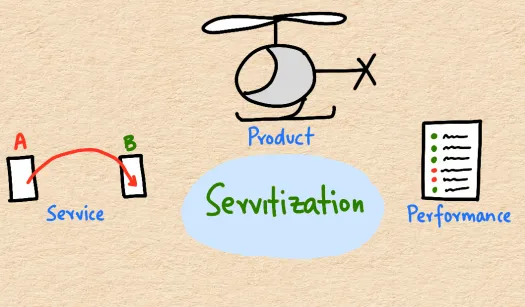
Theodore Levitt, a Harvard economist and professor, said People don't want to buy a quarter-inch drill, they want a quarter-inch hole.
With larger purchases come greater expectations of performance, reliability and longevity.
An approach companies use to deliver these is servitization.
Servitization is a change in mindset from selling a product to selling a Product-Service System.
Professor Andy Neely from the University of Cambridge is a leading researcher in this area and says that the term has been around since the 1980s.
The classic example here is Rolls Royce.
It no longer sells jet engines. Instead, it sells flying hours.
Rolls Royce now delivers reliability - done through planned and predictive maintenance by analysing data from monitoring systems in the field.
Making a move from scheduled repairs to targeted repairs based on performance data enables fleet operators, from the military to councils, to improve things from combat readiness to bus times.
The way we get media has changed with this approach.
Netflix offers media as a service and Amazon offers ebooks.
Servitization has quietly transformed the software business.
It's hard to buy a software product any more. It's all software as a service (SAAS) now.
This is not always a good thing.
Netflix has lots of rubbish on it. The good stuff still needs to be paid for.
We get a million books with an Amazon Unlimited subscription - but the good authors still set their own prices and get committed readers.
Servitization in these cases gives the companies a revenue stream and a customer convenience - but the pressures of controlling costs means that the performance is not superior to just buying a really good collection of books and movies.
And software as a service really all-too-often means self-service software.
So, it's still a product sell rather than a service when we think about it.
According to Professor Neely, servitization is something of a paradox.
Many firms offer product-service systems, but it makes less money and carries higher risks than we first think.
The key thing is a change in mindset - in how we connect a product, service and performance.
This shift starts with the customer going from wanting to own a product to being happy with a service.